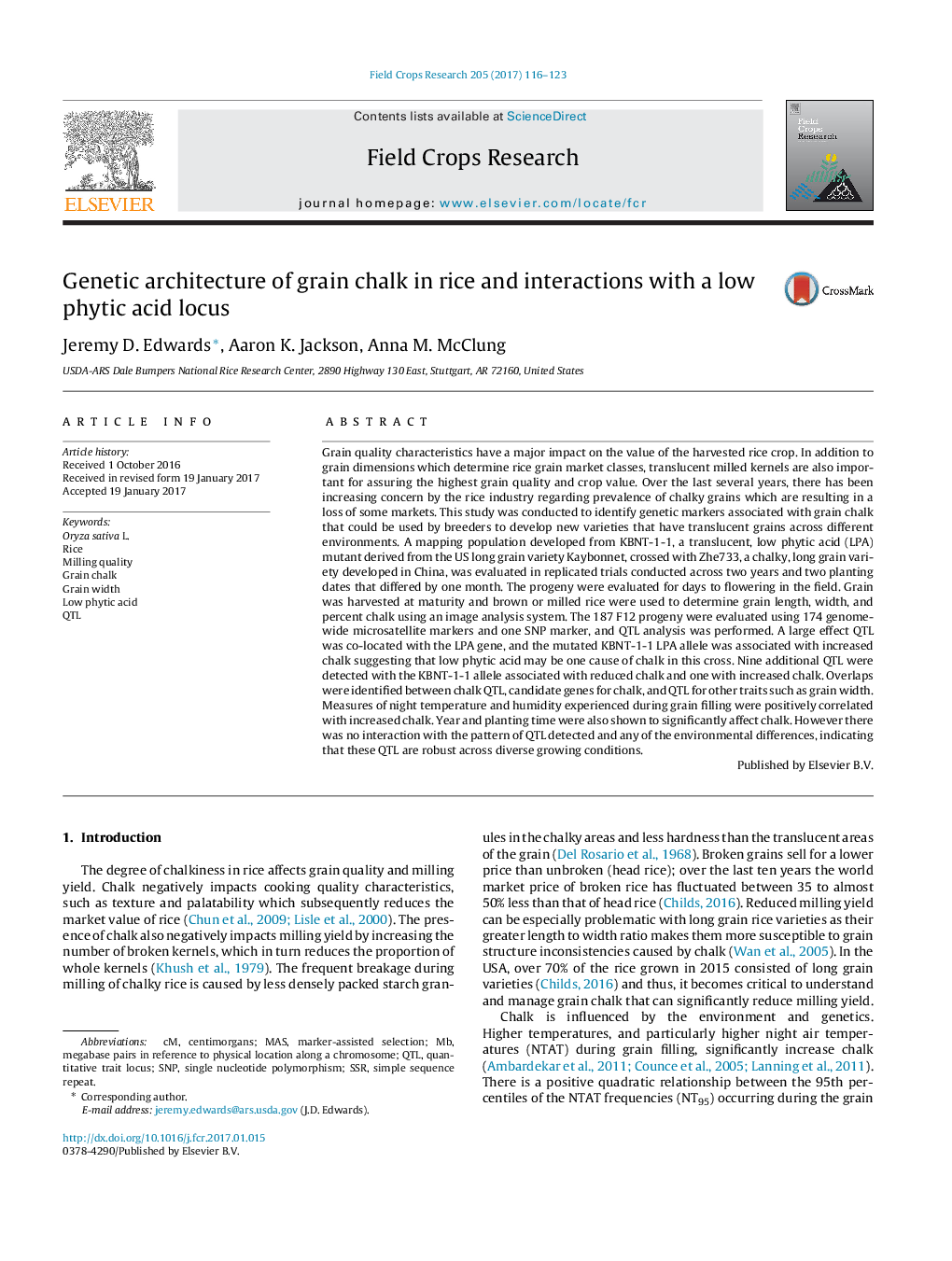| کد مقاله | کد نشریه | سال انتشار | مقاله انگلیسی | نسخه تمام متن |
|---|---|---|---|---|
| 5761597 | 1624658 | 2017 | 8 صفحه PDF | دانلود رایگان |
عنوان انگلیسی مقاله ISI
Genetic architecture of grain chalk in rice and interactions with a low phytic acid locus
ترجمه فارسی عنوان
معماری ژنتیکی گندم دانه در برنج و تعامل با اسید فیتیک پایین
دانلود مقاله + سفارش ترجمه
دانلود مقاله ISI انگلیسی
رایگان برای ایرانیان
کلمات کلیدی
SSRQTLOryza sativa L.grain widthLow phytic acid - اسید فیتیک پایینmarker-assisted selection - انتخاب کمک کننده نشانگرRice - برنجMAS - بیشترsimple sequence repeat - دنباله ساده تکرار کنیدCentimorgans - سانتمینگورگانquantitative trait locus - علامت کمی صفتSingle nucleotide polymorphism - پلیمورفیسم تک نوکلئوتیدیSNP - چندریختی تک-نوکلئوتیدMilling quality - کیفیت فرز
موضوعات مرتبط
علوم زیستی و بیوفناوری
علوم کشاورزی و بیولوژیک
علوم زراعت و اصلاح نباتات
چکیده انگلیسی
Grain quality characteristics have a major impact on the value of the harvested rice crop. In addition to grain dimensions which determine rice grain market classes, translucent milled kernels are also important for assuring the highest grain quality and crop value. Over the last several years, there has been increasing concern by the rice industry regarding prevalence of chalky grains which are resulting in a loss of some markets. This study was conducted to identify genetic markers associated with grain chalk that could be used by breeders to develop new varieties that have translucent grains across different environments. A mapping population developed from KBNT-1-1, a translucent, low phytic acid (LPA) mutant derived from the US long grain variety Kaybonnet, crossed with Zhe733, a chalky, long grain variety developed in China, was evaluated in replicated trials conducted across two years and two planting dates that differed by one month. The progeny were evaluated for days to flowering in the field. Grain was harvested at maturity and brown or milled rice were used to determine grain length, width, and percent chalk using an image analysis system. The 187 F12 progeny were evaluated using 174 genome-wide microsatellite markers and one SNP marker, and QTL analysis was performed. A large effect QTL was co-located with the LPA gene, and the mutated KBNT-1-1 LPA allele was associated with increased chalk suggesting that low phytic acid may be one cause of chalk in this cross. Nine additional QTL were detected with the KBNT-1-1 allele associated with reduced chalk and one with increased chalk. Overlaps were identified between chalk QTL, candidate genes for chalk, and QTL for other traits such as grain width. Measures of night temperature and humidity experienced during grain filling were positively correlated with increased chalk. Year and planting time were also shown to significantly affect chalk. However there was no interaction with the pattern of QTL detected and any of the environmental differences, indicating that these QTL are robust across diverse growing conditions.
ناشر
Database: Elsevier - ScienceDirect (ساینس دایرکت)
Journal: Field Crops Research - Volume 205, April 2017, Pages 116-123
Journal: Field Crops Research - Volume 205, April 2017, Pages 116-123
نویسندگان
Jeremy D. Edwards, Aaron K. Jackson, Anna M. McClung,
